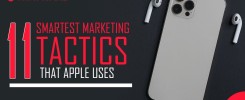Get a Customized Website SEO Audit and Online Marketing Strategy and Action
Retailers today require a fully integrated retail strategy that offers a uniform experience to customers across all touchpoints and platforms. Customer friction points arise in the absence of this approach, inhibiting leads and sales.

By reducing friction, Facebook aimed to make social networking easier for everyone (even your parents!). It has been rewarded with billions of engaged users and the associated advertising income.
Reducing or reducing friction from your business can have severe implications, including:
- Increased lead-to-customer conversion
- Higher retention and renewal rates
- Increased workplace productivity
🔶 What Exactly Is Customer Friction?
Customer friction is any step in the customer experience that prevents the customer from purchasing, using, or finding value in the product.
That may sound complicated but think of it as any obstacle that gets in the way of the consumer.
You’re not in the business of selling stuff; you’re in the business of assisting people in making purchases. The greatest method to encourage customers to buy your products is to reduce consumer friction points along the path.
When purchasers encounter friction, there are just too many options. If you discover and understand your client’s pain issues, you will gain their trust and strengthen your connection.
Reduced friction sounds fantastic. Of course, it does, but first, you must identify the places of friction in your firm, which might be more difficult than you think.
This blog article will show frequent forms of workplace friction, ranging from new company acquisitions to internal processes.
1) Customer On-Boarding And Business Development
If you want to eliminate friction, you should always start with yourself.
➾ What’s the deal?
Improving your onboarding process is the quickest method to boost revenue and all associated business benefits.
Salespeople have a particularly challenging job. With so many options available to consumers and organizations today, sales teams face the arduous challenge of breaking through barriers, outlining unique selling propositions, and overcoming sales objections. While there are several methods to improve the sales process, one obvious option to minimize friction is to automate (often occurring) administrative tasks inside the sales process.
Customer onboarding is an excellent place to begin.
There should be no reason for any difficulties throughout the onboarding process with the technologies accessible today.
A new customer’s “yes” should automatically activate (at the very least!) the following actions:
- Instant electronic signatures to seal the purchase
- Customer-facing email or online onboarding procedure
- Update CRM and accounts receivable records
- Notify and transfer new customers to the relevant support team
Again, these are just a few instances that will differ based on your company. The goal is that all of these operations should (and should!) be completed in minutes with minimal manual effort. You can simply automate the vast majority with the appropriate software.
These are the characteristics that distinguish successful businesses from mediocre ones.
2) Marketing To Consumers
For new clients, reduce friction in your marketing efforts to provide warm leads to your sales staff.
Every day, we are inundated with marketing messages, and we all have opinions about the corporations that provide them. Are you bombarded with sales messages on Facebook from a firm whose website you only glanced at once? Not exactly the best potential experience.
Instead of just pushing sales messaging, current marketers want to create marketing that is “so beneficial, you’d pay for it.”
The objective is to shorten the conversion route or improve the quality of leads that convert.
Areas of contention in digital marketing that are often related to “conversion rate optimization” include:
- Website design and user experience
- Landing page length
- Brand voice and trust signals
- Testing and optimization
Each of these factors may be examined and optimized separately. Test your messaging, and make sure every landing page has a clear (and appropriate!) CTA, and use testimonials or reviews to establish trust.
Bottom line: Instead of waiting for the customer onboarding process to minimize friction, utilize your marketing to lube the lead chute.
3) Employee Involvement
We understand this is a sensitive issue, yet it is also a major cause of conflict in your company. So significant that Gallup predicts that the United States loses productivity each year due to disengaged employees—one of the key signs of dysfunction.
Workplace dysfunction is normal, but there is a significant difference between the occasional missing yoghurt and company-wide instability and unhappiness. A drop in employee engagement may suggest some form of friction, whether administrative (improper use of tools or procedures) or relationship-based (a communication breakdown someplace that is producing irritation).
Here are a few areas of dysfunction to watch out for in your workplace:
- Employees who operate outside of regular operating procedures to expedite their projects;
- Employees who use ‘Shadow IT’ and workarounds that put the entire system at risk; and
- Employees who do not use a new tool due to a lack of sufficient understanding and onboarding.
Investigating these challenges might reveal possibilities to improve your internal procedures and enhance employee engagement.
4) Absence Of A Written Process
The B-17 bomber was a technological wonder; it was the most sophisticated aircraft of its day. However, it was so complicated that one of the most experienced pilots (and crew) died in a crash on a test flight before mass production. It was thought too complicated to fly until someone wrote a checklist for takeoff, in-flight operation, and landing and displayed it in the cabin. With that checklist in hand, the B-17 provided the United States with a significant strategic edge during WWII.
The argument is that written checklists may assist us in completing complicated jobs by making the procedure failsafe and providing clear directions. This applies to everything from military strategy to how we function in the office.
➾ Consider the following example of friction caused by an employee who is unsure what to do:
- Can’t figure out how to finish assignment; searches online in vain.
- Calls boss, who is at lunch; leaves a message for assistance.
- Work interruption, so he begins a new assignment
- The manager returns, irritated, and sternly explains the right procedure.
- Employee forgets how to accomplish the work the following time, restarting the procedure.
Is this situation overstated? You decide! We’ve seen it happen several times. Written checklists for your firm might help to avoid this source of contention.
5) Information technology and infrastructure
As previously said, there is no need to allow technology to impede productivity. Tools should help, not hinder, your work! Any time your tech stack generates friction, it’s an urgent call to action to determine what’s causing the issue, whether it’s due to technology, training, or user mistakes.
Many businesses, for example, have an email storage restriction. Account managers can consume many data with their email chains, which are necessary for recording approvals and other tasks.
If account managers delete emails for 30 minutes per week to keep them under the email storage quota, that’s 2 hours per month, 24 hours per year. How much do account executives make?
A terabyte of additional email storage costs roughly $100 and might last an account manager her whole career. You do the calculations.
When recognized regions of friction are broken down in financial terms, the case for reducing friction through technology becomes a no-brainer.
6) Customer Service And Account Management
Have you ever completed a follow-up survey from a firm to which you subscribe? Perhaps you were in a good mood, or perhaps they gave an incentive, but either way, you’re clicking through their questions, which contain (much to your chagrin) a slew of personal information they should already have. Depending on the number, it may be enough to make you want to abandon the survey…
A survey that is only half-completed isn’t ideal, but it’s hardly the end of the world. If you apply the same unneeded friction to a new business agreement, you can have serious problems with your bottom line!
Customer support calls are unavoidable, but making them a hated experience by adding friction is a proven way to drive your consumers elsewhere for help. Customer assistance has some friction, primarily because things aren’t operating properly, hence the call! However, this does not preclude you from improving the experience by minimizing the friction associated with such interactions.
For example, what is the average number of touches required until a customer service issue is resolved? If you have more than one, you have space for improvement.
There are several possibilities, including well-organized FAQ pages, software that auto-fills known information, and chatbots, to mention a few.
Friction Is Unavoidable, But It Does Not Have To Be Insurmountable.
Friction points are the straw that broke the camel’s back—one during the client onboarding process, another during internal meetings, and another when giving customer assistance. Each straw isn’t that significant on its own, but if you have many sources of friction or repeat offenders, you might wind up with a major issue.
From the consumer’s perspective, a minor hiccup in the sales process might lose you 10% of your potential sales. Add another point of difficulty in the payment process, and you might lose an additional 5%. Following that, consumers have a problem with customer service, and 5% give up and depart.
These three “insignificant” areas of friction cost you 20% of your consumers. Poof. Gone.
You’re losing money because of these tiny snags. They’re also all over the place.

Thatware | Founder & CEO
Tuhin is recognized across the globe for his vision to revolutionize digital transformation industry with the help of cutting-edge technology. He won bronze for India at the Stevie Awards USA as well as winning the India Business Awards, India Technology Award, Top 100 influential tech leaders from Analytics Insights, Clutch Global Front runner in digital marketing, founder of the fastest growing company in Asia by The CEO Magazine and is a TEDx speaker and BrightonSEO speaker.


